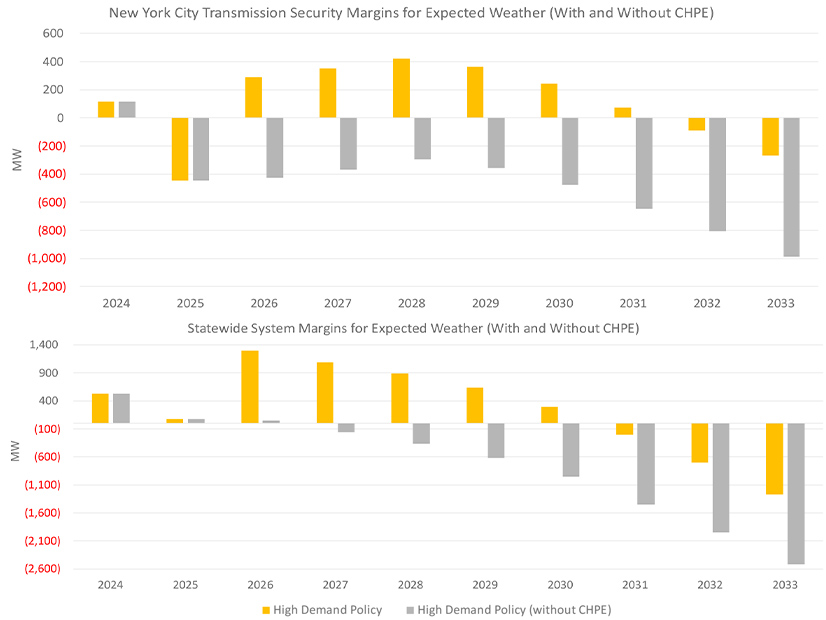NYISO did not identify any new near-term reliability issues in its third-quarter Short-Term Assessment of Reliability (STAR) released Friday, but it does anticipate significant load increases in western and central New York that could warrant more attention depending on how a previously identified supply shortfall in New York City is addressed.
In its previous STAR in July, the ISO identified a potential shortfall of up to 446 MW by 2025 because of peaker plants retiring to comply with state Department of Environmental Conservation regulations to limit nitrogen oxide emissions. (See NYC to Fall 446 MW Short for 2025, NYISO Reports.)
Last week’s STAR notes that NYISO has reduced that figure by 20 MW, but “this potential reduction does not eliminate the need and has a negligible impact of the findings in” last quarter’s report.
More significant, it said, “is the inclusion of additional large load projects primarily in western and central New York, many of which are currently undergoing a load interconnection study.” It expects the state’s large loads to increase by about 500 MW by 2025, reducing the state’s reliability margin to less than 100 MW during normal operating conditions. “The rapid growth of large load projects poses a risk to the future reliability of the New York grid if it is not matched with the equivalent addition of new resources,” NYISO said.
According to NYISO’s 2023 Gold Book, the large load projects are mostly new cryptocurrency mining and data centers. They also include the planned 1,250-acre Science & Technology Advanced Manufacturing Park (STAMP) in Genesee County in the west and a green hydrogen facility in Massena, along the Canadian border in the north.
“While there is potential for a deficient statewide system margin in 2025, the primary driver is the New York City deficiency already identified,” the report said. “Depending on the solution to the New York City reliability need, the potential statewide deficiency may be mitigated.”
The planned addition of the Champlain Hudson Power Express transmission project would help the New York City shortfall, but it is not expected to go into service until summer 2026. (See Champlain Hudson Converter Station Breaks Ground in NYC.)
Without any additional resources, according to the report, a heat wave with temperatures of 95 to 98 degrees Fahrenheit in 2025 could lead to up to a 555-MW transmission security margin deficiency in New York City and over 1 GW statewide. The CHPE project would help alleviate that risk in subsequent years, but only until 2029, after which margins would decrease again.
The ISO is considering keeping certain peaker plants operational beyond the DEC’s mandated retirement dates, as allowed under certain conditions set by the department, but only as a last resort if projects like the CHPE do enter service on time, the report said.
“As we have noted in previous STAR reports, if there are insufficient solutions to the 2025 reliability need, then [NYISO] may very well have to extend at least some of the peakers that are subject to the DEC’s regulations,” Zach Smith, ISO vice president of system and resource planning, said during the New York State Reliability Council’s Executive Committee meeting last week. “We’re working diligently to identify solutions and hope to publish a short-term report describing those solutions and our findings within the next few months.”
The third-quarter STAR also flagged a transmission security issue in the Central Hudson area, driven by the assumed unavailability of certain generators because of the peaker rule. But because the relevant generators in the region did not provide complete deactivation notices before the STAR was conducted, the ISO only identified the issue for informational purposes and could not evaluate whether the deactivations would cause a reliability need.




